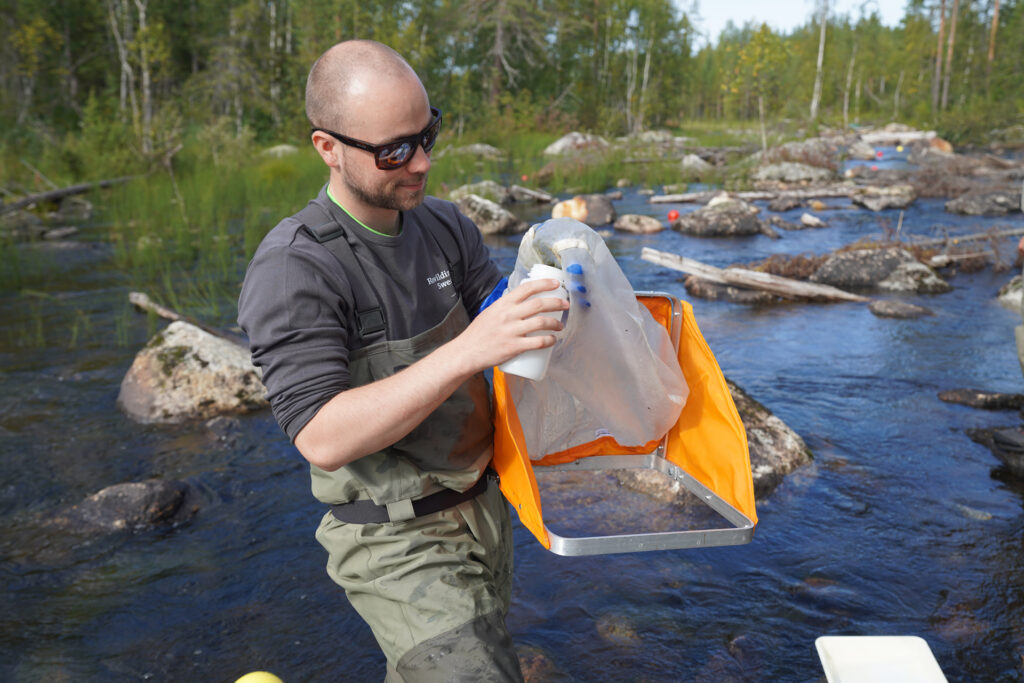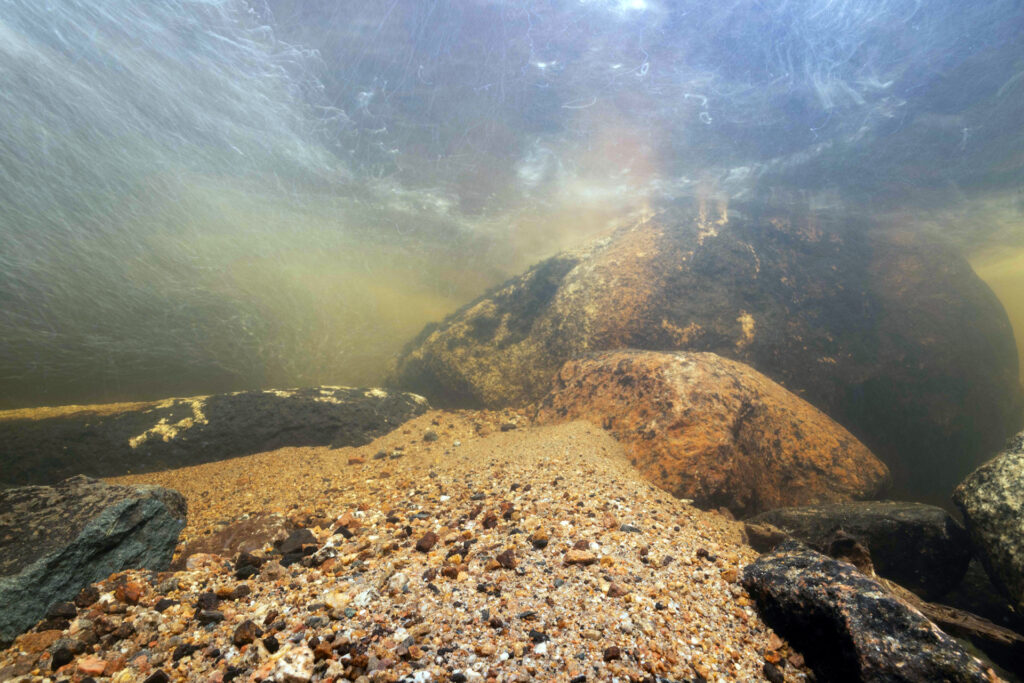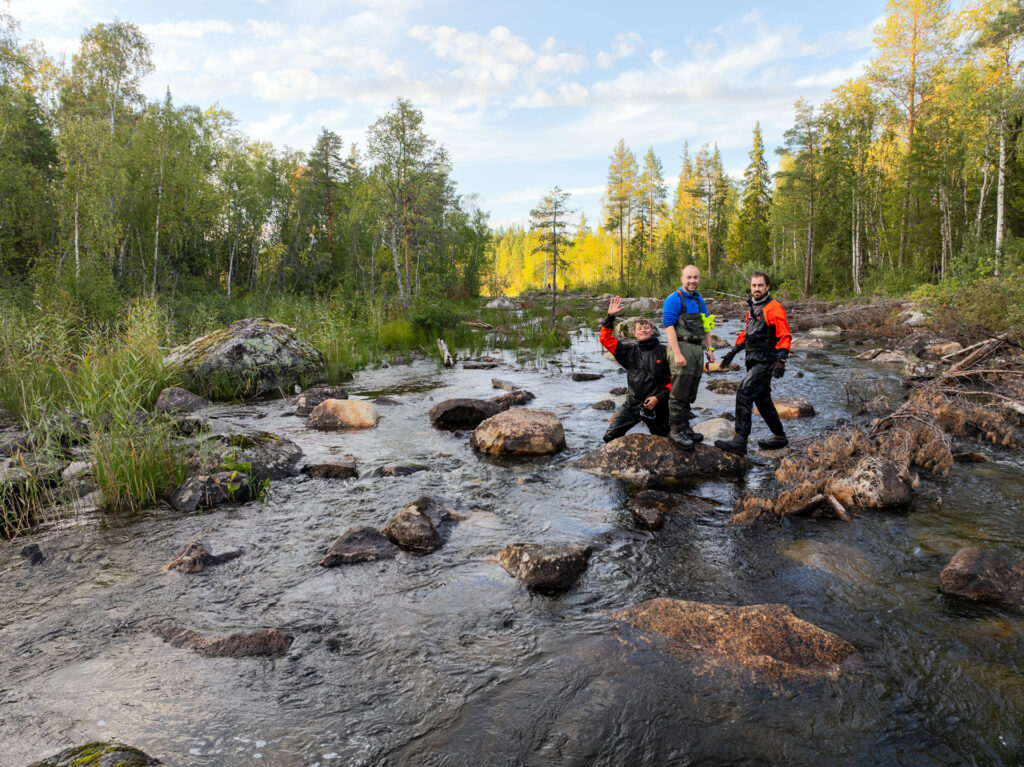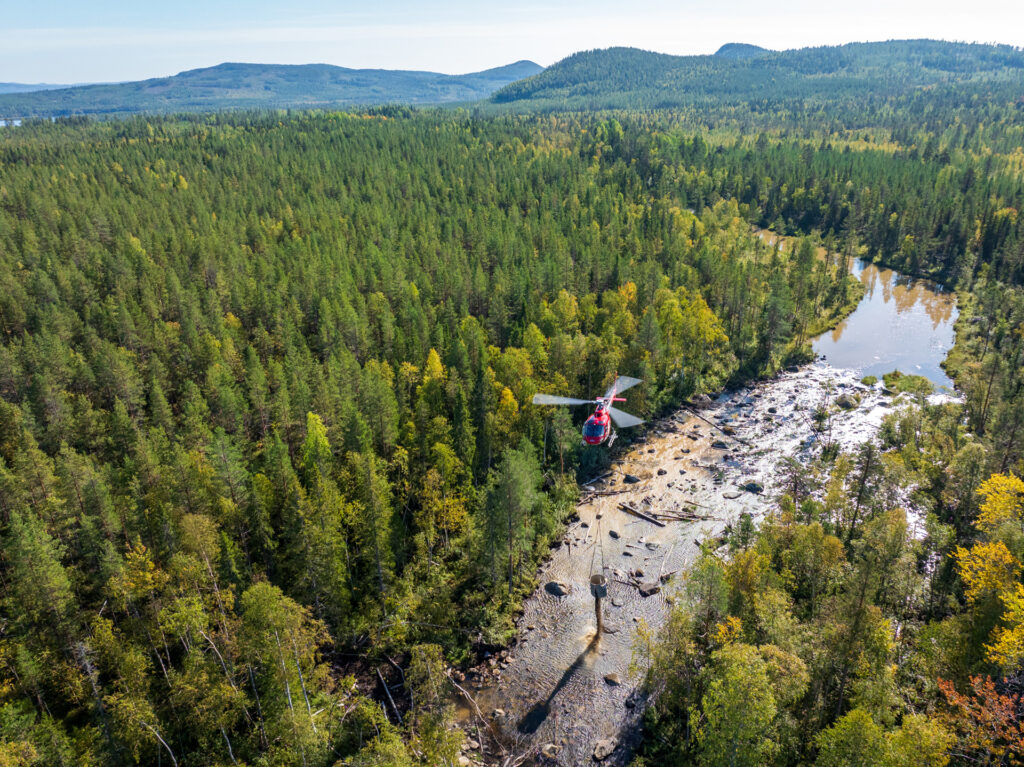In September, the Rewilding Sweden group organised a helicopter drop of 150 tonnes of sand and gravel into the Abramsån River. We caught up with a Norwegian PhD pupil concerned with monitoring the impression of this pioneering intervention to search out out why.
Arthur de Bruin / Rewilding Europe
Situated in Rewilding Europe’s Swedish Lapland rewilding panorama, the Abramsån River is a tributary of the 210-kilometre lengthy Råne River – Europe’s longest undammed forest river. It’s typical of many waterways within the northern Sweden broken by historic logging.
In 2023, the Rewilding Sweden group kicked off efforts to rewild stretches of the Abramsån by restoring the pure form and movement of the river. These actions are a part of the group’s “waterscape” method, which goals to reinforce blue-green corridors for nature and wildlife by restoring the free movement of water, and enhancing the connection between wholesome rivers and surrounding landscapes. In September this 12 months – the second 12 months of restoration on the Abramsån – the group organised a helicopter drop of 150 tonnes of sand and gravel into the restored stretch of the river.
Why did they do that, and what sort of impression are the group anticipating? We requested Vebjørn Kveberg Opsanger, a Norwegian PhD pupil on the Trondheim-based Norwegian Institute for Nature Analysis (NINA) concerned with monitoring, to clarify.

Alexandro Kröger / Rewilding Sweden
Why was the sand and gravel dropped within the river?
Within the early twentieth century, the Abramsån was closely impacted by Sweden’s industrial-scale forestry trade. To facilitate the transportation of logs, massive boulders and stones had been faraway from the river mattress and piled up on the river’s edge, whereas a picket ground made up of particular person tree trunks was laid down in components of the river. The river channel was additionally straightened out and narrowed, to additional improve the timber floating course of.
This channelisation elevated the movement of water within the river, which in flip washed away nearly the entire fine-grained sediment that will, underneath pure situations, be present in pockets and backwaters round bigger stones on the riverbed. It was just about all flushed downstream. With out this sediment, many bottom-dwelling insect larvae (or benthic fauna) had been disadvantaged of habitat, so their populations declined and disappeared. Moreover, the spawning grounds of fish and habitat for freshwater pearl mussels disappeared too.
The latest efforts of the Rewilding Sweden group have reversed the channelisation on the Abramsån, and have helped to revive the pure movement of water. However the fine-grained sediment continues to be lacking, and it will take centuries for it to construct up once more naturally. By reintroducing sand and gravel, the purpose is to speed up the restoration of a spread of benthic fauna species, increase the replica of fish similar to trout and salmon, and improve mussel populations.

Arthur de Bruin / Rewilding Europe
Why are bottom-dwelling insect larvae vital for the ecosystem?
Benthic fauna is a common time period used for small animals that reside on the backside of rivers and lakes and contains many alternative teams – similar to insect larvae, small bristle worms, nematodes, mussels, snails, clams, mites, beetles, and leeches. Enabling populations of those animals to get better within the Abramsån will result in the upper retention of vitamins within the restored stretch of river, as a result of they feed on natural materials within the water, similar to that derived from leaves. Predatory animals, similar to fish, then feed on the benthic fauna. So there’s potential for the entire meals net to be enhanced. Backside-dwelling animals additionally act as decomposers and assist to scrub the water by means of filtration.

Arthur de Bruin / Rewilding Europe
How lengthy will it’s earlier than the impression of the drop on benthic fauna turns into noticeable?
Though initiatives to return gravel have been carried out prior to now in rivers in northern Sweden, these have targeted on fish. This is among the first interventions of its sort to focus totally on benthic fauna, so it’s onerous to say precisely how lengthy it should take for the constructive impression of the sand and gravel drop on this animal group to grow to be obvious, and what that impression shall be.
I shall be concerned with monitoring this impression as a part of my doctorate. I’ve already taken samples from the Abramsån over the summer time to measure the benthic fauna earlier than the sand and gravel had been dropped within the river. I haven’t completed analysing these samples but, however anticipate populations of sand and gravel dwellers to be fairly low, in comparison with pure stretches of different rivers in the identical space.
I’ll return to the Abramsån in 2025 and 2026 to see how benthic fauna populations have modified. A restored website with no addition of sand and gravel will perform as a management website. By way of bugs and different benthic fauna recolonising the sediment, dispersal from different rivers may take a while. I’m hoping we are going to see some constructive impression inside two years and stay up for supplying you with some updates.

Arthur de Bruin / Rewilding Europe
Does the pure movement of the river assist to distribute the sand and gravel?
Sure, it does. By way of advantageous sediment, nothing that’s positioned within the river is assured to remain there. The sand and gravel was dropped in a number of spots by the helicopter, alongside the stretch of the Abramsån that the Rewilding Sweden group have just lately restored. A lot of this may occasionally have already been redistributed by the pure movement of the river, however some will accumulate in locations the place it will be discovered naturally. In reality, 150 tonnes feels like quite a bit, but it surely’s truly lower than you assume when positioned within the river to fill cavities and holes shaped on the riverbed between and beneath bigger stones which were returned as a part of the restoration course of.
If this intervention proves to achieve success, then the group will think about using the identical method in different sections of the Abramsån, and in sections of different rivers, which are restored transferring forwards.
The return of sand and gravel in Abramsån was financed by EKOEnergy.

Jeffrey van Houten


















